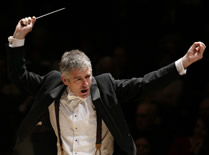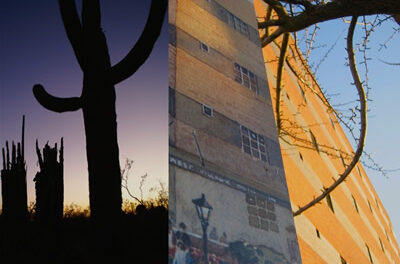At its London premiere in 1743 at Covent Garden, George Frideric Handel’s ubiquitous Messiah was presented with the generic name “A New Sacred Oratorio” for fear of alienating puritanical audience members who’d be hearing it at a venue populated by, gasp, actors. Five years later its true name was reinstated and Messiah began a nearly 270 year run as one of the most recognizable and popular works of Western music. It would be hard to find any orchestra or choral society throughout the world that declines to give a performance of at least a portion of this classic, lest they subject themselves to the wrath and lost revenue of their supporters. Our region is blessed with an almost embarrassment of Messiah riches as we get to choose from two world class complete performances going on nearly simultaneously. While Duke Chapel was presenting their annual three performances, the North Carolina Symphony, Grant Llewellyn, music director, upped the ante by one with four Messiahs. However, even the most “been there, heard that” of us had our ears perked up by the other big name involved in this version: Mozart.
I gave merely glancing notice to the subtitle in small letters “orchestrated by Mozart” below the huge “HANDEL’S MESSIAH” and didn’t really think much of it – until the very first notes of the overture. Gone were the snappy dotted rhythms and highly articulated phrasing; replaced by a slow, connected, nearly geriatric reading that strode dangerously near elevator music. The thought of two and one-half hours of this type of interpretation had visions of a nap dancing in my head. Then, the fugal section began – at a frighteningly fast pace – and all fears of a lethargic, stuporous evening were allayed.
At the request of Baron Gottfried van Swieten, son of the Empress of Austria’s personal physician, Mozart was asked to orchestrate Messiah in keeping with “…dressing Handel with such solemnity and taste so as to please the slaves of fashion on one hand, and yet still show himself capable, on the other, despite all, to remain eminently noble.” Whether this proved successful on both counts is debatable, yet one thing is for certain: the stamp of Mozart’s style in this version is quite pervasive and at times overtakes Handel. In fact, with the addition of a complete woodwind section, in pairs, as well as three trombones, this was such a major undertaking that the Koechel number 572 was added to the Mozart catalogue for this re-orchestration.
Tenor Benjamin Butterfield begins with the recitative “Comfort Ye” followed by the aria “Ev’ry Valley Shall be Exalted.” This set often serves as a vehicle to show off the tenor’s fluidity and knowledge of baroque ornamentation, but this was, for the most part, sung relatively straight. Butterfield’s voice failed to pierce the orchestra’s heavier orchestration and the text may as well have been a grocery list. Perhaps it was fatigue after three performances and one to come the next afternoon, but he didn’t seem to truly awaken until the stunningly performed aria “Behold and See” in part II.
As far as numbers, the North Carolina Master Chorale, with about seventy-five singers, was somewhere midway between the super Messiahs and the HIP (Historically Informed Practice) performances. Music Director Alfred Sturgis prepared the choir to enunciate clearly, sing at often astounding speeds but be nimble, have uniform articulation and have beautiful tone without screaming and shrieking. In short, it was a masterful demonstration of great choral singing.
Mezzo-Soprano Jennifer Holloway was probably the most expressive of the four soloists and managed to keep the interest up in the way over-long opening aria of Part II, “He Was Despised.” Soprano Jodi Burns was a little square in her rhythm and did not quite attain the swing and jubilation necessary for the well known aria “Rejoice Greatly.” Bass soloist Robert Pomakov, surprisingly, had the clearest diction of the quartet and his intonation was spot on in the final aria, “The Trumpet Shall Sound.”
I recall attending a performance several years ago with the North Carolina Symphony, conducted by Grant Llewellyn, where they performed a near HIP performance of Messiah: far fewer strings and singers, prominent harpsichord continuo (missing for the most part tonight), and original orchestration. While the presentation could not have been more different, under Llewellyn’s direction the same excellence and spirit shown through.
For most of the audience, the Mozart version difference did not amount to a hill of beans in this crazy world. But even for those with just passing familiarity, it may have sounded at times like we might as well have been in the middle of Don Giovanni, so pervasive was Mozart’s stamp – particularly in the woodwinds. It ranged from merely buttressing harmonies to downright bizarre chromatic filler to almost silly. In the chorus “All We Like Sheep,” the clarinets and bassoons clip-clopped along in nearly laughable tone painting. However, sometimes even the quietest and almost barely noticeable effects can have the most emotional wallop. In the final Amen chorus of the work – a massive fugue that has all four choral parts enter and build to a pseudo climax – the orchestra then enters and states the fugal theme. Instead of the full section, we get the solo concertmaster answered by the solo principal violist, in a beautifully subdued and solemn moment before the full forces reappear for the glorious full-throated finale.












